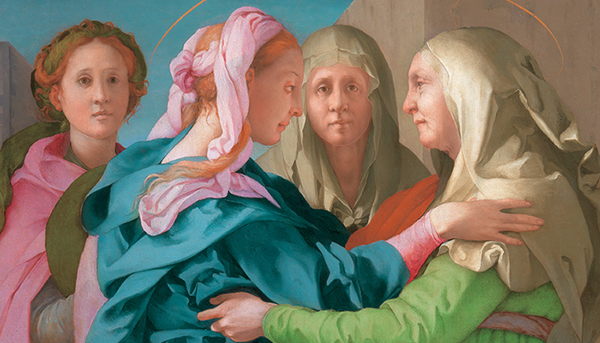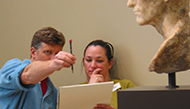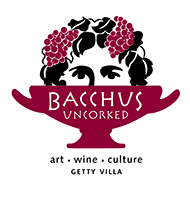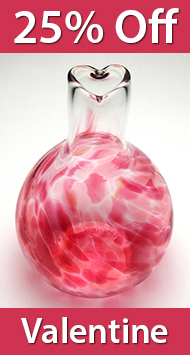EXHIBITIONS
| |
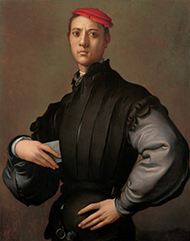 Portrait of a Young Man in a Red Cap (Carlo Neroni?), about 1530, Jacopo da Pontormo. Oil on wood panel. Collection of Mr. and Mrs. J. Tomilson Hill. Image courtesy Shepherd Conservation, London
Portrait of a Young Man in a Red Cap (Carlo Neroni?), about 1530, Jacopo da Pontormo. Oil on wood panel. Collection of Mr. and Mrs. J. Tomilson Hill. Image courtesy Shepherd Conservation, London
|
Pontormo: Miraculous Encounters
February 5–April 28 | The Getty Center
In the late 1520s, during the siege that ended the last Florentine Republic, the painter Jacopo da Pontormo created one of his most moving and innovative altarpieces, the
Visitation. Recent conservation has created the extraordinary opportunity for the work to travel from Carmignano (near Florence) to the United States. This exhibition presents Pontormo's spectacular painting alongside its preparatory drawing and two exceptional portraits painted during the same tumultuous period.
Learn more »
| |
 The Ecce Homo, King Caspar, the Virgin and Child, and the Arms of the Families Kündig and Pfyffer (detail), 1592, Christoph Murer. Pen and black ink, gray wash, with black chalk. The J. Paul Getty Museum
The Ecce Homo, King Caspar, the Virgin and Child, and the Arms of the Families Kündig and Pfyffer (detail), 1592, Christoph Murer. Pen and black ink, gray wash, with black chalk. The J. Paul Getty Museum
|
Marks of Collaboration: Drawings in Context
February 5–April 14 | The Getty Center
Sixteenth-century Swiss designers and glass painters communicated with each other through drawings. With a selection of five works, including the Museum's recently acquired design for a painted glass window by Christoph Murer, this installation investigates how visual and textual information provided by designers guided the execution of paintings on glass. Through close study, visitors can uncover the designer's cues and grasp how these two sorts of artists worked together so successfully.
Learn more »
| |
 Untitled (Outside the Frame #9), 1981–82, Uta Barth. Gelatin silver print. The J. Paul Getty Museum. ©
Uta Barth
Untitled (Outside the Frame #9), 1981–82, Uta Barth. Gelatin silver print. The J. Paul Getty Museum. ©
Uta Barth
|
Mapping Space: Recent Acquisitions in Focus
February 26–July 14 | The Getty Center
Explore the work of artists who have departed from the traditional rules of landscape composition to document specific geographic locations in new ways. Uta Barth, Robert Kinmont, Richard Long, Mark Ruwedel, and Wang Jinsong use photography to describe natural and built environments through unspecified modes of measurement and intuitive use of perspective. Influenced by the legacy of Conceptualism, a movement that gained popularity in the 1960s, these works emphasize each maker's personal relationships with the chosen sites.
Learn more »
PERFORMANCES
| |
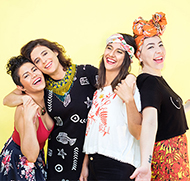 Photo by Sea Robin Studios
Photo by Sea Robin Studios
|
Sounds of L.A.: LADAMA
Saturday, February 16, 7:00 p.m., and Sunday, February 17, 4:00 p.m. | The Getty Center
Experience LADAMA, comprised of musician-educators Lara Klaus, Daniela Serna, Mafer Bandola, and Sara Lucas. Harnessing music from their respective countries
of origin—Brazil, Colombia, Venezuela, and the United States—these performers create original songs using traditional and non-traditional instruments. Their work transports us to a future where the world communicates across continents and cultures, through sound and story. Presented in association with the Smithsonian Year of Music.
Learn more about this free event and get tickets:
February 16 »
February 17 »
Coming Soon
| |
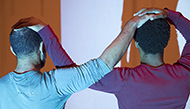 Photo by Nicola Goode
Photo by Nicola Goode
|
Villa Theater Lab's The Oedipus/Antigone Project
Friday, March 8, 7:30 p.m.; Saturday, March 9, 3:00 and 7:30 p.m.; Sunday, March 10, 3:00 p.m.
| The Getty Villa
Choreographer Lionel Popkin's new evening-length premiere,
The Oedipus/Antigone Project, takes its impetus from two of Sophocles's best-known plays:
Oedipus Rex and
Oedipus at Colonus. Popkin blends unexpected humor and resonant physicality to craft worlds that have "a flair for originality that periodically has you realizing that you are smiling to yourself in the dark," as
The Washington Post puts it.
Learn more and get tickets »
TALKS
| |
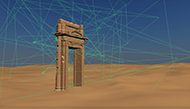 Digital rendering of the propylon of the Temple of Bel at Palmyra. 3-D images of ancient monuments are an evolving tool in modern archaeology. Courtesy of Million Image Database Project
Digital rendering of the propylon of the Temple of Bel at Palmyra. 3-D images of ancient monuments are an evolving tool in modern archaeology. Courtesy of Million Image Database Project
|
The Future of Palmyra in the Digital Age
Saturday, February 2, 2:00–4:30 p.m.
| The Getty Villa
Protecting Palmyra's cultural heritage in the wake of deliberate destruction—and preserving its remains—are daunting challenges. Can 3-D printing and virtual reality help reconnect us to its history and bring back what was lost? Discover how artists, researchers, and technologists are seeking to build a "new" Palmyra and grappling with issues of aesthetics, authenticity, and ethics.
Learn more about this free talk and get tickets »
| |
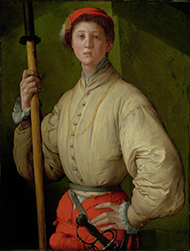 Portrait of a Halberdier (Francesco Guardi?), 1529–1530, Jacopo da Pontormo. Oil on canvas (transferred from wood panel). The J. Paul Getty Museum
Portrait of a Halberdier (Francesco Guardi?), 1529–1530, Jacopo da Pontormo. Oil on canvas (transferred from wood panel). The J. Paul Getty Museum
|
Tradition and Innovation in Florentine Painting: Pontormo's Visitation
Saturday, February 9, 3:00 p.m. | The Getty Center
Bruce Edelstein, professor at New York University Florence and co-curator of
Pontormo: Miraculous Encounters, discusses the context of Pontormo's celebrated 16th-century paintings, especially the
Visitation from the parish church of Carmignano and the Getty's
Portrait of a Halberdier. He looks at how the Italian master drew from medieval sources, yet produced works of startling modernity that resonated with artists well into the 20th century.
Learn more about this free talk and get tickets »
| |
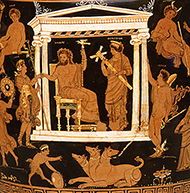 Funerary Vessel with Dionysos in the Underworld (detail), South Italian, made in Apulia, 350–325 B.C. Red-figure volute krater attributed to the Darius Painter. Terracotta. Toledo Museum of Art; Gift of Edward Drummond Libbey, Florence Scott Libbey, and the Egypt Exploration Society, by exchange, 1994.19
Funerary Vessel with Dionysos in the Underworld (detail), South Italian, made in Apulia, 350–325 B.C. Red-figure volute krater attributed to the Darius Painter. Terracotta. Toledo Museum of Art; Gift of Edward Drummond Libbey, Florence Scott Libbey, and the Egypt Exploration Society, by exchange, 1994.19
|
Imagining the Underworld: Life after Death in Ancient Greek Religion
Sunday, February 10, 3:00 p.m.
| The Getty Villa
Ancient Greeks often imagined the souls of the dead leaving the body for another existence. Where did they think the dead were going, and what awaited them? Classicist Radcliffe Edmonds explores myth, art, and texts to reveal diverse and sometimes conflicting Greek ideas about life after death.
This program complements the exhibition
Underworld: Imagining the Afterlife.
Learn more about this free talk and get tickets »
| |
 Funerary Vessel with an Underworld Scene (detail showing Sisyphus, condemned to an eternity of rolling a boulder uphill and watching it roll back down), South Italian, made in Apulia, 360–340 B.C.; found in Altamura, Italy, in 1847. Terracotta. Red-figure volute krater attributed to the Circle of the Lycurgus Painter. National Archaeological Museum of Naples, 81666
Funerary Vessel with an Underworld Scene (detail showing Sisyphus, condemned to an eternity of rolling a boulder uphill and watching it roll back down), South Italian, made in Apulia, 360–340 B.C.; found in Altamura, Italy, in 1847. Terracotta. Red-figure volute krater attributed to the Circle of the Lycurgus Painter. National Archaeological Museum of Naples, 81666
|
Beyond Death: Visualizing the Afterlife in the Ancient and Early Modern World
Sunday, February 17, 1:00–4:00 p.m.
| The Getty Villa
Throughout history, the prospect of death has inspired diverse beliefs about what is to come. Ideas about the next world and moral judgment have provoked creative visions from artists around the globe. Learn from experts about the ways the afterlife has been imagined in a variety of cultures and religions, from depictions of eternal suffering to blissful ideals of paradise.
This program complements the exhibition
Underworld: Imagining the Afterlife.
Learn more about this free talk and get tickets »
| |
 Man with Camel, about AD 160, limestone. Ny Carlsberg Glyptotek, Copenhagen IN 2833
Man with Camel, about AD 160, limestone. Ny Carlsberg Glyptotek, Copenhagen IN 2833
|
Silk, Spices, and Silver: Palmyra and the Ancient Luxury Trade
Wednesday, February 20, 7:30 p.m.
| The Getty Villa
The people of ancient Palmyra in Syria became wealthy through luxury trade to the Persian Gulf, the Indian Ocean world, and the remotest parts of China. In the first centuries of our era, merchants transporting silk, pearls, gemstones, and other precious items crossed the desert from east to west through this thriving commercial hub. Hear from Roman archaeologist Katia Schörle about this famed caravan city and how the convergence of trade and social networks made it one of the most prosperous cities of the ancient world.
Learn more about this free talk and get tickets »
| |
 Initial G: The Ascension of Saint Mary Magdalene, about 1392–1402, Niccolò da Bologna. Tempera and gold leaf on parchment. The J. Paul Getty Museum, Gift of Elizabeth J. Ferrell, Ms. 115 (2017.122), leaf 4v
Initial G: The Ascension of Saint Mary Magdalene, about 1392–1402, Niccolò da Bologna. Tempera and gold leaf on parchment. The J. Paul Getty Museum, Gift of Elizabeth J. Ferrell, Ms. 115 (2017.122), leaf 4v
|
How Letterforms & Typefaces Change the World
Wednesday, February 27, 7:00 p.m. | The Getty Center
The written word dominates many aspects of human lives. From the earliest forms of writing in the world's first civilizations to today's digital media, letterforms carry their own potent meanings. Kevin Larson, part of Microsoft's Advanced Reading Technologies team, and John Hudson, type designer and cofounder of Tiro Typeworks, join Shelley Gruendler, founder of Type Camp, to explore how letterforms and typefaces have the power to change the ways we consume ideas.
Learn more about this free talk and get tickets »
| |
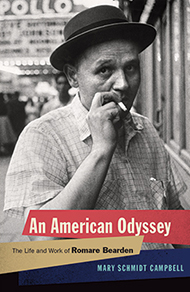 Image courtesy of Oxford University Press
Image courtesy of Oxford University Press
|
Mary Schmidt Campbell: An American Odyssey
Thursday, February 28, 11:00 a.m. | The Getty Center
Spelman College President Mary Schmidt Campbell discusses
An American Odyssey: The Life and Work of Romare Bearden, her biography of the renowned 20th-century African American artist. Bearden is known for work that explores universal themes through the celebration of African American culture.
A book signing follows this free talk.
Learn more and get tickets »
COURSES
Drawing from the Masters: Positive and Negative Space
Sundays, February 3 and 17, 3:30–5:30 p.m. | The Getty Center
Enjoy the tradition of sketching from original works of art every first and third Sunday of the month at the Getty Center. In February, join artist Kaitlynn Redell in exploring how artists compose pictures, design forms, and communicate emotions through the use of positive and negative space. All experience levels welcome.
Learn more about this free, drop-in program:
February 3 »
February 17 »
Bacchus Uncorked: Love, Loss, and Libations
Saturdays, February 9 and 16, 4:00–7:00 p.m.
| The Getty Villa
Celebrate the spirit of Valentine's Day exploring love, art, and wine at the Getty Villa. Start with a gallery tour highlighting famous lovers from classical mythology and the gods and mortals whose passions took them to Hades's realm. Then join wine educator and sommelier Giammario Villa to sip and learn about wines from volcanic regions of Southern Italy, considered entry points to the Underworld.
This program complements the exhibition
Underworld: Imagining the Afterlife.
Learn more and get tickets:
February 9 »February 16 »
| |
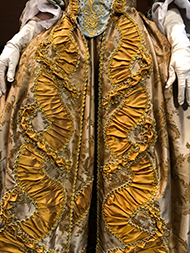 Eighteenth-century French fashion
Eighteenth-century French fashion
|
Artist-at-Work: French Fashion
Saturday, February 9, 1:00–3:00 p.m. | The Getty Center
Art Circles
Saturday, February 9, 6:00–8:00 p.m. | The Getty Center
Enrich your Saturday nights. Join an open-ended discussion in the galleries to heighten your appreciation and understanding of the visual arts by exploring one masterpiece with an educator. The chosen work of art changes every session, making each visit a new experience.
Learn more and get tickets »
| |
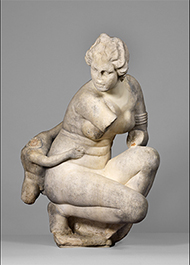 Crouching Venus, Roman, A.D. 100–150. Gray Marble. The J. Paul Getty Museum
Crouching Venus, Roman, A.D. 100–150. Gray Marble. The J. Paul Getty Museum
|
Drawing from Antiquity: Dynamic Line in Statue of a Crouching Venus
Saturday, February 16, 11:00 a.m.–12:30 p.m.
| The Getty Villa
A favorite artwork of J. Paul Getty's, the larger-than-life
Crouching Venus, kneels in a dramatic pose popular in ancient times. The bathing goddess turns her head toward her young son Cupid as she reaches her arm in the other direction. Her balanced, twisting body provides an excellent model for drawing movement with expressive, dynamic lines.
Learn more about this free program »
FAMILY
| |
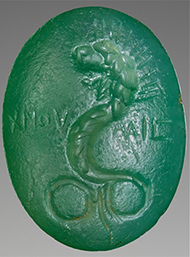 Engraved Gem with Chnoubis (a protective lion-headed snake), Roman, A.D. 100–250. Green chalcedony. The J. Paul Getty Museum, Gift of Damon Mezzacappa and Jonathan H. Kagan
Engraved Gem with Chnoubis (a protective lion-headed snake), Roman, A.D. 100–250. Green chalcedony. The J. Paul Getty Museum, Gift of Damon Mezzacappa and Jonathan H. Kagan
|
Powerful Protectors: Magic in the Roman World
Saturdays, February 2 and 9, 11:00 a.m.–3:00 p.m.
| The Getty Villa
Join the fun in this hands-on clay lab and discover how artists have transformed earth and water into beautiful ceramics for thousands of years. Try your hand at the potter's wheel, mold a Medusa, and shape a handle to decorate a communal vessel. L.A.-based ceramic artist Wayne Perry guides the experience and shares what his artistic practice has in common with the ancient Greeks'.
Learn more about this free course:
February 2 »February 9 »
FROM THE GETTY STORE
Valentine Gifts—25% Off
 Portrait of a Young Man in a Red Cap (Carlo Neroni?), about 1530, Jacopo da Pontormo. Oil on wood panel. Collection of Mr. and Mrs. J. Tomilson Hill. Image courtesy Shepherd Conservation, London
Portrait of a Young Man in a Red Cap (Carlo Neroni?), about 1530, Jacopo da Pontormo. Oil on wood panel. Collection of Mr. and Mrs. J. Tomilson Hill. Image courtesy Shepherd Conservation, London
 Untitled (Outside the Frame #9), 1981–82, Uta Barth. Gelatin silver print. The J. Paul Getty Museum. ©
Uta Barth
Untitled (Outside the Frame #9), 1981–82, Uta Barth. Gelatin silver print. The J. Paul Getty Museum. ©
Uta Barth


